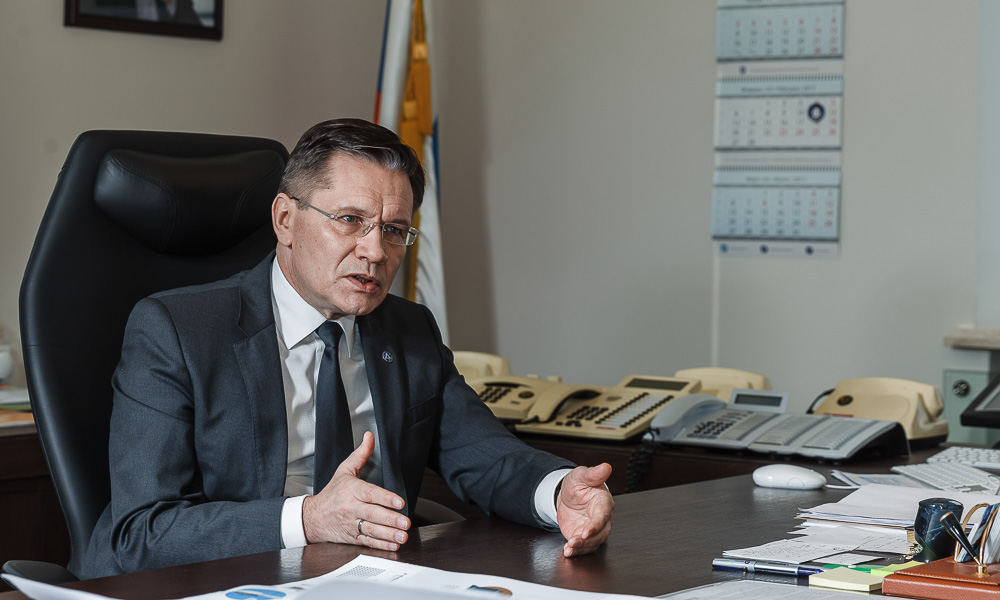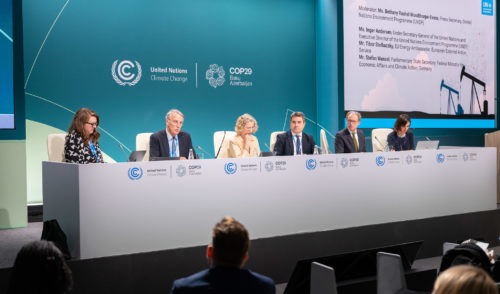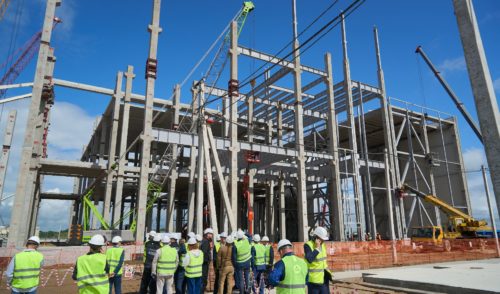
Integrated Solution To Every Customer
back to contents– What are the global trends in the nuclear power industry? What is the role of Rosatom on the global scene?
– Environmental improvement and reduction of carbon dioxide emissions are key items on the present-day global agenda. An answer to these challenges was given in the Paris Agreement adopted at the UN Climate Change Conference in Paris. It is of particular importance that nuclear was for the first time officially declared, alongside renewables, to be a component of the future ‘green energy’ mix.
The International Energy Agency, one of the world’s most respected expert bodies, says that we need to increase nuclear power generation 2.5 times to 6,101 TWh by 2040 to secure our non-carbon energy future. Russia is a signatory to the Paris Agreement and is already investing a great deal of effort in tackling climate change.
We operate 35 power reactors on 10 sites across the country. Every year, they prevent 250 million tons of carbon dioxide from being emitted into the atmosphere, which is equivalent to the total emissions from all the vehicles in Russia for 2 years.
And if we count all the Russian-designed VVER-based nuclear power plants to be in the world by 2030, they will prevent 2.4 billion tons in carbon dioxide emissions, or 80% of the annual emissions from all the vehicles on our planet. Figuratively, the nuclear energy industry may be called ‘the lungs of the planet’, helping the Earth breathe clean air.
– How many reactors are being built by Rosatom?
– Rosatom is currently a world leader in terms of reactors under construction on the international market, with 34 power reactors projects being implemented in 12 countries in Europe, the Middle East, North Africa, and Asia Pacific.
– Are you satisfied with the company’s last year performance?
– As of late 2015, our portfolio of foreign projects for the next decade was worth 110 billion dollars. In 2016, it exceeded 113 billion dollars. Rosatom remains a global leader in uranium enrichment and is a Top 3 company worldwide in terms of uranium extraction and international supplies, covering 17% of the global demand for nuclear fuel.
We have commissioned Kudankulam Unit 2 in India and kicked off the second phase of Iran’s Bushehr project. The construction contract for the Rooppur nuclear station has taken effect, and we plan to pour the first concrete on the site later this year. Another major development was the signing of the first commercial contract to deliver TVS-K nuclear fuel to Sweden’s Ringhals nuclear power plant. Before that, we had supplied our fuel to Russian-designed facilities only. Today, as the situation has changed and we have started shipping fuel for Western-designed reactors, new markets and opportunities are open for us.
–What are Rosatom’s major technology achievements in the last year?
– In 2016, we commissioned a BN-800 fast reactor at the Urals-based Beloyarsk nuclear power station that won the 2016 POWER Plant of the Year Award. Fast breeder reactors help us improve spent nuclear fuel management technologies and minimize radioactive waste by introducing the closed nuclear fuel cycle. We have made good progress in developing fast reactors and are ready to share our competencies with foreign partners. Another milestone of the last year was the startup of the world’s first Generation 3+ reactor at Novovoronezh.
– Rosatom intends to build two nuclear reactors of this type in Hungary. What are their technical advantages?
– VVER-1200 is our flagship Generation 3+ reactor. It features an unparalleled combination of active and passive safety systems preventing radiation leakage and notably reducing the chance of human error and even the most serious beyond-design-basis accidents. The design is fully compliant with the post-Fukushima safety requirements, the most stringent IAEA guidelines, and the European Utility Requirements (EUR). Russia’s new reactor is the world’s safest, and I am not exaggerating.
VVER-1200 at Novovoronezh is completed and being prepared to be brought online soon. The same reactor units are now under construction at Leningrad-2, in Belarus, Bangladesh and other countries. In Finland, for instance, the new reactor is going through the licensing process.
It is remarkable that we are not just building a nuclear station in Finland, but also investing in it. We own a 34% share in Fennovoima, a project company responsible for the construction and operation of the Hanhikivi nuclear power plant. Rather than looking for just a technology vendor, customers want to find a partner offering an integrated solution that includes financing, lifelong maintenance, workforce training and many other things. Rosatom was reorganized to become a vertically integrated nuclear vendor capable of providing an integrated solution to every customer.
– How safe are the new reactors if compared to reactors in operation?
– Their specific feature is a strong focus on the so-called passive safety systems that remain operational even if the plant is cut off from power supply. Besides, they require no operator intervention. These systems include passive heat removal components, hydrogen recombiners and a core catcher. As new safety standards require, the reactor island is shielded with a double containment providing for improved protection against earthquakes, tsunami, hurricanes and plane crashes. All these improvements take VVER-1200 to a new height in nuclear safety. VVER units at Paks have been operating for more than 30 years and account for a third of electric power generated in the country. Hungary’s nuclear regulator has issued a permit to extend the service life of the first three reactors by 20 years. The fourth unit is scheduled for life extension in 2017.
– Hungary hopes that the construction of new reactors at Paks will begin in early 2018. Do you think it is a reasonable date?
– This is true that on-site operations are expected to start in 2018. The project has already received a license from local environment protection authorities. An application has been sent to Hungary’s regulator to issue a construction license. We hope that the regulator will obtain approval of the European Commission within the shortest time possible, and we will be able to get down to the construction.
– When are you going to invite bids for large-size machinery of the turbine island?
– It is a bit early to talk about exact timelines. All procurement procedures will be open and transparent, in strict compliance with the EU standards. We will welcome bids from all balance-of-plant suppliers interested in the project, including those based in the EU, and we expect broad participation of Hungarian businesses. Local content – that is, input of local manufacturers – could reach 40% of the project cost.
– Rosatom has a Hungary-based engineering subsidiary, Ganz EEM. Do you have plans to acquire other local producers?
– Ganz EEM manufactures pumps for Rosatom’s nuclear projects in and outside Russia, as well as projects in non-nuclear business areas. Having a 100% stake in the company, we are able to carry out large-scale retrofit and technology upgrade programs. And we have no plans to acquire other businesses in Hungary.
– Does Rosatom have any other partners in the Hungarian nuclear industry alongside Paks?
– The nuclear cooperation between Russia and Hungary dates back more than 60 years and covers many areas.
We have been working with Hungary’s power company MVM, supplying fuel to Paks since it was commissioned, and providing maintenance services for the operating nuclear plant. Rosatom has strong ties with the country’s educational and research institutions, and other industry organizations.
All in all, the Paks extension project comes logically from the long-standing nuclear cooperation between Russia and Hungary. We place very much importance on the partnership with this country, and I am sure that our cooperation will expand into new fields and projects.




